Interest in the Shroud of Turin continues to be insatiable. As the Church remembers Christ’s death and resurrection this Easter, a world leading scholar in the study of the Shroud explains why he’s so confident this really is the burial cloth of Jesus

The Shroud of Turin is the most studied object in the world – and for good reason. If authentic, this linen cloth would constitute physical evidence for the resurrection of Jesus.
Not so fast comes the gut reaction from many Christians, concerned that such a theory skirts dangerously close to venerating a spurious relic. Besides, hasn’t the science concluded this is simply a medieval forgery?
But the truth is, there is little consensus on the Shroud’s authenticity. After thousands of hours of research, study and tests, opinion is still divided among both scholars and enthusiasts.
And so the intriguing possibility remains open that as God raised Jesus from the dead, some form of energy – whether atomic, radioactive or other – was released from his body, leaving a miraculous imprint on this, his burial cloth.
In the late 1970s, the Shroud of Turin Research Project brought together a group of American and European scientists who were granted unprecedented access to the Shroud. Their report in 1981 concluded the image was of a scourged, crucified man and that the blood stains were “not the product of an artist”. Yet, seven years later, another group of scientists declared it to be a medieval fake, having dated part of the shroud to between 1260 and 1390. In subsequent years, their carbon dating methods have been heavily questioned. The mystery remains.
The bottom line is: nobody can explain that image
Joe Marino has been studying the Shroud for 47 years. Although raised Catholic, he was agnostic by the time he reached adulthood. Describing himself as “wide open” to exploring the meaning of life, he stumbled across a book that claimed the Shroud was akin to “the fifth Gospel”; he was intrigued enough to buy it, and read it one sitting. That moment marked the beginning of his journey back to Christian belief.
Fast forward to the present day, and Marino now has one of the biggest personal collections of Shroud material in the world. He’s written a door-stopping 800-page book purely on the question of carbon dating and spoken at major conferences around the world. Now retired, he scours the web every day, searching for yet more information – a process he describes with no hint of irony as “living the dream”.
It is, admittedly, not your average dream. But when it comes to discussing the authenticity of Shroud of Turin, you’d do well to find anyone better informed than Joe Marino.
Researching the Shroud hasn’t just been an academic exercise. It helped bring you back to your faith, didn’t it?

Yes, the Shroud was really an impetus for me to come back to my Christian roots, as I started reading the Bible again and I actually joined a monastery for a period of time.
The Shroud made my faith in the gospel more real. The Bible is full of stories of miracles and signs that Jesus worked. And he says: “Even though you do not believe me, believe the works” [John 10:38, ESV]. And I think the Shroud is a sign, if not a miracle.
Christianity is an historical religion. We believe that Jesus lived in a physical place and time in history that we can investigate. The Bible says the apostles saw Jesus after his death [Acts 1]. That’s strange as, let’s face it, dead people don’t rise from the dead! The only reasonable explanation, in my opinion, is that they did see Jesus after his death, because why would they subject themselves to torture and death if they really didn’t believe that?
I think the Shroud is empirical evidence for Jesus. It has all the markings that correspond to what the four Gospels say. You can look at that face on the Shroud and see the man was beaten horribly, but there’s a serenity and a peace that somehow transcends that.
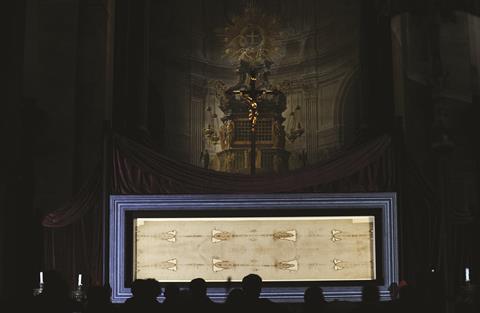
Why are you so sure the Shroud is real?
One of the biggest reasons is that modern science is still unable to explain how the image got onto the Shroud. There’s just so many strange characteristics.
You can’t really prove it 100 per cent, but I think the evidence shows that, more likely than not, it is authentic, based on a lot of different factors, including scientific, historical and religious. But ultimately people have to make up their own mind.
If we assume the Shroud is authentic, why do you think God allowed it to exist and be preserved?
I think God used the resurrection to validate Jesus’ mission. And I think he left the Shroud as a gift to [humankind]. Maybe for the doubting Thomases of the 20th and 21st centuries. Thomas didn’t believe that the apostles saw Jesus [John 20]. He wanted more evidence. And I think the Shroud gives you a little more evidence.
Sometimes people will say: “Well, I don’t need the Shroud for my faith.” And the implication is: “and you shouldn’t either”, but we can’t limit how God chooses to reach people. If God wants all [people] to be saved, he will probably use various means to do that. I think the Shroud is a very effective means. Jesus said: “You will know them by their fruit” [Matthew 7:20, CEB] and you can see that the fruits of the Shroud are openness and, in many cases, conversion to Christianity.

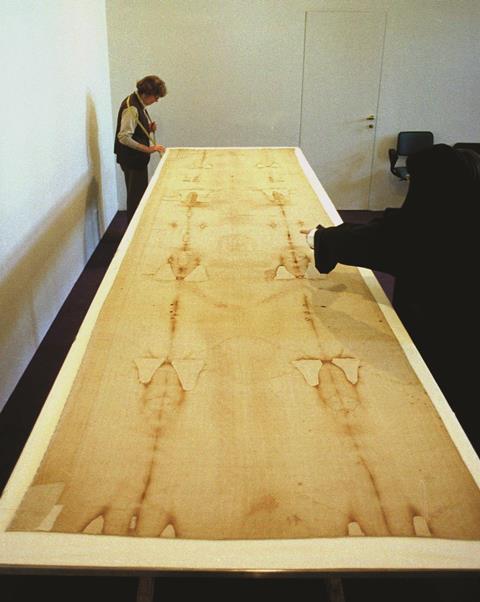
Those who are sceptical will argue that the image on the Shroud wasn’t really the face of Jesus, but some kind of forgery, perhaps. Has anyone been able to replicate the image using other means?
No. I mean, you will find people who say they know how it was done or they’ve duplicated the image but, in order to replicate the Shroud, you have to replicate every single characteristic. And no one has done that. There is absolutely no one in the world that has figured out how it was done.
Most sceptics will say that it’s an unknown artistic technique, that it was caused by some unknown natural technique that we’re unaware of, but we might find out in the future.
5 reasons to believe
1 When they first examined it in the 1970s and 80s, the Shroud of Turin Research Project team of scientists stated the markings on the cloth were consistent with a crucified body and that the stains were real human blood.
2 The linen is 2,000 years old, according to Italian scientist Julio Fanti, who used an X-ray scattering method to date it.
3 The image on the cloth is an ‘impossible’ image – one that cannot be replicated by any modern scientific methods. And the clearest image was hidden within the Shroud for centuries, only visible once photography was invented.
4 The bloodstains appear to match the wounds suffered by Jesus of Nazareth as recorded in the Gospels.
5 Pollen found on the Shroud originates from plants that only grow in Judea.
The fact we can’t recreate this image today with the benefit of modern science surely makes it extremely unlikely that a medieval forger could have created it?
Absolutely. And this is negative, it’s got three-dimensional information, it’s superficial, it’s best viewed from between six and ten feet. If you get too close to the image, you can’t see it. So did an artist have a six-foot brush? The evidence doesn’t fit the idea of a forger doing it and there’s no artistic technique that anybody can come up with to explain how it was done. The forger would have needed to have been an expert in biblical exegesis, anatomy, physiology, chemistry, physics. The theory just does not make sense to me at all.
Assuming it’s real, how did the image end up on the cloth? Some have suggested that, at the point of resurrection, Jesus’ body emitted radiation, or there was an electromagnetic burst of light. Is that plausible?
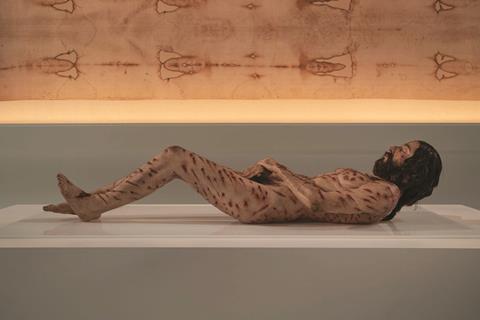
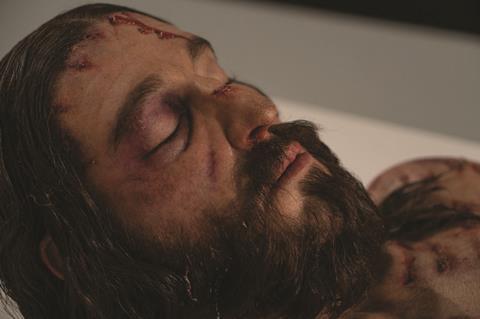
A lot of scientists believe that whatever formed the image came from the body itself and not from an external source. And so a lot of them posit that it was controlled radiation, or even a nuclear reaction of some kind. I don’t have any problem with saying it’s a controlled radiation event. There might have been several types of radiation, because there seem to be some X-ray effects. Some people claim to see finger bones and teeth; a lot of that’s debated. But the bottom line is: nobody can explain that image.
Given all the study over decades, why hasn’t science been able to come to an agreed conclusion?
This item fits so well into both the scientific and the religious camps. And there’s some tension there. You have scientists who are afraid to speak their mind about what they believe about the Shroud because they’re worried about their reputation. You have religious people who are worried that people will think they’re worshipping an idol.
By the way, I don’t think anyone has ever really worshipped the Shroud, so it’s a mistaken concern. But I have noticed, in the last five to ten years, an increase in Catholic priests and Protestant ministers showing more interest in the Shroud. I think that’s mainly because of the hard scientific evidence, even though there isn’t consensus on many aspects of it.
5 reasons to doubt
1 In 1988, an international team of scientific experts performed radiocarbon dating on snippets of the Shroud and concluded it was manufactured between 1260 and 1390. They said the Shroud was nothing more than a medieval hoax.
2 The Roman Catholic Church considers the Shroud to be an icon, not a holy relic.
3 The conclusion of a 2018 study in blood pattern analysis was not supportive of the claimed authenticity of the Shroud. The study said the apparent blood splatters could only have been produced by someone moving to adopt different poses, rather than lying still.
4 The Turin Commission concluded in 1979 that stains on the garment are likely pigments, not blood.
5 John’s Gospel records “strips of linen” (John 20:5) being used to wrap the body of Jesus, not a single burial sheet. (Although other versions translate this as linen ‘clothes’, ‘wrappings’ or ‘cloths’.)

How useful is the Shroud of Turin as a tool for evangelism?
I think it’s very useful. For a lot of sceptics, the Shroud scares them to death, quite frankly.
A lot of Protestants are sceptical from the get-go because they think it’s a Catholic relic, and they’re suspicious of all relics. But you’ve got to do some nuanced thinking. Just because there’s a lot of fake relics in the 14th century doesn’t automatically mean that the Shroud is one of those. You have to examine each item on its own merits.
The Shroud has been a bridge. Protestant and Catholic relations are always kind of tense, but many of my Shroud friends are Protestants. A lot of those people were sceptical to begin with. Once you start studying and looking at the evidence, it’s different.
But I don’t think evidence is as powerful as it used to be. People are apt to make their own reality and ignore evidence – not only in Shroud stuff, but politics. I grew up in a time where evidence meant something. And I think the evidence is compelling – when you look at all the different aspects and the amount of hours that people have spent on it, and the fact that it hasn’t been duplicated.
I’ve literally read all the major things in English, over 47 years, and with the help of Google, I’ve read a lot of foreign works as well. I believe, based on the preponderance of the evidence, it’s real. And I think a lot of people that take the time to actually study it find that as well.









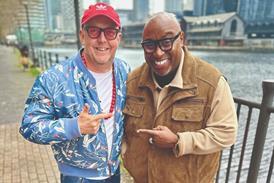
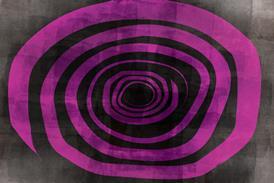







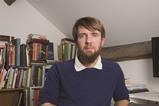




















3 Readers' comments